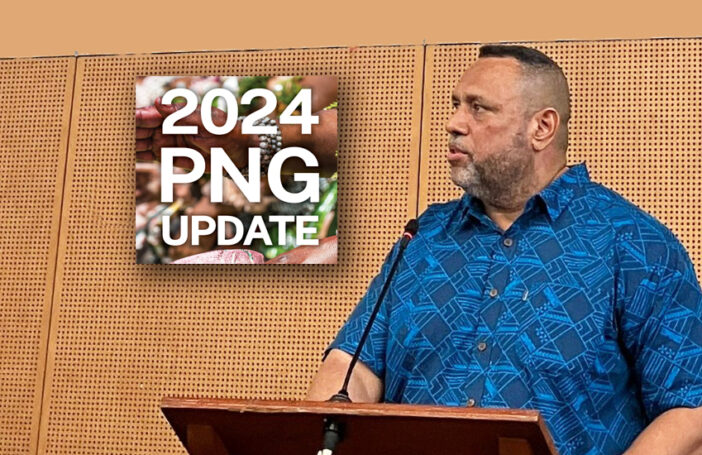The federal parliamentary inquiry into the role of the private sector in development, commissioned back in February 2014, is finally done. The joint committee’s report turns out to be an unruly menagerie of various people’s pet preoccupations, but you can find some good things in it if you persevere.
The report, being compendious and lacking any real framework or definition of scope, defies easy summary. Almost anything the aid program does or might do touches on the private sector in either developing countries or in Australia, and sure enough this report touches on almost anything the aid program does or might do (with the notable exception of support for improved labour standards). The same can be said of the 154 public submissions to the inquiry, which have been assiduously mined for quotes. The committee might have interpreted its loose terms of reference much more strategically so as to focus squarely on public-private partnerships for development—particularly for social service delivery, inclusive supply chain development, local enterprise development, outward investment promotion and the production of global public goods. (The inquiry was directed to look at procurement policy, so the inclusion of material on that topic gives no cause for complaint.)
As it is, the report contains a great deal that is really off topic or ho hum, including recommendations in relation to public financial management (especially sovereign wealth funds), migrants’ remittances, aid support for the development of infrastructure PPPs, gender equality in Seasonal Worker Program recruitment, aid transparency, and so on. Some of what is said under these headings is right and good, for example on women’s empowerment and aid transparency, but not especially relevant to the objectives of the inquiry. One particularly egregious off-topic recommendation states that the Australian government should ‘inform the Australian Parliament of any significant changes proposed by multilateral organisations that could impact on Australia’s interests prior to any decision being taken’ (Rec 24). On looking into the details, it becomes apparent that this responds to a submission [pdf] from the Minerals Council of Australia complaining about a 2013 decision of the World Bank’s board, quite a balanced one in fact, to place constraints on lending for fossil fuel projects. What on earth has this to do with the role of the private sector in development?
The discussion below covers the report’s recommendations in a very selective way as they relate, or do not relate, to four topics: the present untied-aid policy; support for the private provision of social services; the establishment of an Australian Development Finance Institution; and the role of the private sector in promoting poverty reduction and economic development under its own steam.
The tying of aid procurement
The report’s most controversial recommendation is that the government ‘review its untied grants policy’ (Rec 24, again) and in particular ‘review development and humanitarian assistance with a view to increasing the proportion of in-kind aid to better meet our new national objectives’ (Rec 25). No argument is given for these recommendations other than that untying is believed to reduce ‘badging’ opportunities and that some other donors have untied aid procurement less than Australia has. Uniquely in this report, not a single quote from a public submission is adduced in support of these two recommendations (see pp. 220‑222). The underlying thought, spelled out in the report’s foreword by committee chair Dr Sharman Stone (Lib), is that victims of disasters and conflicts should not be deprived of fresh, high-quality, fairly-priced Aussie produce. Somehow, tying procurement of such produce would deliver ‘value for money’ and, somehow, said produce would be delivered ‘just in time’ to save on warehousing costs (p. ix). Fresh fruit, straight to your door.
This parrot is deathless. DFAT Secretary Peter Varghese did his best to bury it singlehandedly following the change of government (e.g. see here, p. 66). Eventually, some ten months later, the government itself got around to affirming unambiguously that aid procurement would remain untied. Most recently, the government’s commitment to untied aid has been explained and quite heavily underscored in its aid-for-trade strategy (p. 7). However, Dr Stone—who represents the fruit growers of Victoria’s Goulburn valley and earned her doctorate in economics and business for a thesis on international trade in food—is a sworn enemy of her own party’s policy in this area. At one point she even unilaterally announced it would change. It did not, but Dr Stone still belongs to the same faction as Théophile Gautier’s cat:
The eyes of the cat, fixed upon the parrot with an intensity that had something of fascination in it, plainly said … : “Green though it is, that chicken must be good to eat.” (My Private Menagerie, 1869)
In any case, the policy is presumably not about to change and it shouldn’t. The UN World Food Programme, Dr Stone’s primary bugbear, should buy its food as cheaply as it can get it, and as close to where it is needed as possible. The aid program should not be used to compensate Australia’s farmers for any loss of competitiveness associated with the agricultural policies of other countries. Perhaps it was inevitable that the report would recommend in this way, given Dr Stone’s role and known views. But it is very surprising that no other committee member from any party bothered to dissent, as is often done in these inquiries.
Private provision of social services
One recommendation of the report with which it should be easy to agree is that Australia should do more to support private providers of healthcare services in the region (Rec 4). However, the restriction of this recommendation to the health sector, and the notion that Australia should create a ‘flagship’ private healthcare initiative in this sector, appear to owe more to urgings from Australian suppliers of healthcare services than to any recognition of the significance of non-government social service providers. The same recommendation could as well have been made in relation to education services, or water supply and sanitation services. In all these areas, private suppliers, who are often non-profit suppliers but not charities, play an important role and deserve more support than they get from Australian aid, which in fact is close to nil. However, it doesn’t follow that they necessarily need help from Australian suppliers of these same services, or Australian regulators of such suppliers. They might need much more basic things.
An Australian Development Finance Institution?
The committee was asked to consider ‘additional … financial instruments the Australian government could use to enhance the role of the private sector in development’. This amounted to a request for advice on the merits of creating a bilateral Development Finance Institution (DFI). The report says rather contradictory things about this. Dr Stone’s foreword says, ‘the Committee has not recommended this approach. The Australian Government has shown what can be done by partnering with Australia’s own world-class financial institutions’. However, DFAT’s partnerships with Westpac and ANZ, whose actual outputs, by the way, are entirely unknown, have nothing to do with bringing additional financial instruments into play, and probably not a lot to do with encouraging foreign direct investment in developing countries. If anything, they have to do with increasing access to financial services and financial literacy in certain places, mainly in the Pacific.
The report in any case all but contradicts its own foreword by recommending a review to assess whether Australia should establish a DFI (Rec 21). In making this recommendation, the committee observes that Australia is unlikely to be able to compete with existing and new multilateral DFIs—entirely missing the point that bilateral DFIs are typically created to entice a donor country’s own firms to invest in developing countries, with dual development and market development benefits, and little or no ongoing cost to aid budgets following initial capitalisation. Even donors whose aid is largely untied, like the US and Germany, maintain bilateral DFIs with tied procurement. The financing offered by DFIs isn’t on aid terms, so the question of aid tying doesn’t arise, or rather only arises in connection with any initial or subsequent injections of aid capital. While the fusing of commercial and development objectives, which is usually central to the DFI concept, might not be palatable to everybody, it is surprising that Dr Stone, for one, did not like it. It must be assumed the barrier was in fact the up-front cost of creating a DFI—which was assumed to be too high in the context of a diminished aid budget.
There should in fact be consideration of one proposition in particular: that Australia establish a bilateral DFI for the Pacific region, including Papua New Guinea and Timor-Leste, or perhaps pursue the establishment of an ANZ DFI, for this purpose. Both Jim Adams and Bob McMullan have argued for something like that proposition previously. A DFI for the Pacific need not be a mammoth institution. The costs to the aid budget would be relatively small given that most of the DFI’s resource mobilisation capacity would rest on government guarantees rather than paid-in funds. Like other DFIs, the institution would be expected to become financially self-sustaining. And, if well built, a Pacific-focused DFI could be an accessible, responsive institution with priorities, governance arrangements, instruments and procedures appropriate to the region, which will probably never be well served by the larger institutions.
Unsubsidised private sector effort
The report has too little to say about what Australian business is doing and should be doing under its own steam to contribute to poverty reduction and economic development in the Asia-Pacific. According to the terms of reference, this topic should have occupied the inquiry a great deal; the scope of the inquiry was certainly not confined to the role of official aid in support of private sector activity. For example, in its discussion of social impact investment, the committee’s assumption at all times is that the government must figure out how to climb into the picture. But the government need not do that, and risks creating distortions if it does.
When businesses themselves create and observe codes and standards, operate more inclusively, go well beyond the normal run of Corporate Social Responsibility activity, organise around development goals or modify supply chains in response to consumer or shareholder preferences, it will usually be enough that these actions are applauded and encouraged by governments and parliaments. Where governments are actually getting in the way, that’s another matter—for example, the committee rightly recommends consideration of legislative change, mirroring changes overseas, to recognise ‘benefit corporations’ that are neither purely profit-driven nor entirely non-profit. On the whole, the report misses an opportunity to highlight what the Australian private sector is doing, and could and should be doing more of, independently of government.
Conclusion
Is there much that’s good in this report? The answer to that question might not really matter, as the government is not likely to give it a lot of attention at this late stage in the policy development process. However, some of the committee’s recommendations do have merit.
There is a case for considering a bilateral DFI, at least for the Pacific. DFAT should have a ‘private sector and philanthropic communication and engagement unit’ (Rec 28), provided it is equipped with a clear set of objectives and principles for engagement. That unit should ‘introduce a mechanism through which partnerships can be established in a co-owned process to ensure risks, responsibilities and benefits are understood and properly assigned’ (also Rec 28) and it should ‘monitor and report annually on business partnerships established’ (Rec 15). Volunteers should more often be placed with businesses (Rec 7), and less often with government and UN agencies. Women business leaders would benefit from greater opportunities to network and share experience (Rec 11). More could be done to support companies in making their supply chains inclusive (Rec 2), particularly through effective brokering between companies and local organisations. And more could be done to support partnerships to deliver global public goods (Rec 4), though not only in connection with drugs, diagnostics and vaccines.
What is most glaringly absent from the report of the inquiry is a clear articulation of the range of objectives that DFAT or an other official aid agency might have in entering into partnerships, particularly partnerships involving some kind of public subsidy, with private actors. Without this, it was difficult for the committee to offer a very useful or convincing discussion of the principles, instruments, administrative arrangements and due diligence processes required to make such partnerships work well. It’s now up to the government, whether in a direct response to this report, or in its anticipated strategy for private sector engagement and development, to view the terrain with a clearer eye.
Robin Davies is the Associate Director of the Development Policy Centre.





Robin,
Thank you for the comprehensive analysis. Thank you in particular for keeping the Pacific DFI concept at the forefront. I acknowledge the upfront cost from a diminishing aid budget. However, my understanding is that Austria established its own DFI recently with upfront money from their EFIC equivalent. This is not necessarily the best solution but it is an interesting idea. My experience in the Pacific is that no-one else is or would be prepared to do this in the smaller countries of the Pacific. I believe it could be beneficial and it seems to be an idea which would appeal to the current governments in both countries.
Robin, thanks for the useful overview.
Just a query re: support for a bilateral DFI. This was also raised in the Jim Adams piece the other day. Why do you think there is a gap that cannot be filled by the IFC out of the World Bank Group Sydney office? I know they struggle for traction, but it is pretty well resourced and I don’t see why there isn’t viability in extending their influence if there is truly demand for financing services in the Pacific.
How would a bilateral DFI be any different? Is it a risk issue? If so, having just come back from a trip to DFID and having a conversation with the DFI guys there, my experience on this is that these undertakings are not straight forward.
I know I would be reticent to impose this kind of complexity on the current Australian aid program, but I would like more on your views. Perhaps it warrants a separate Blog topic?
Better than a blog would be the review that has been recommended by the parliamentary inquiry, but with scope confined to the Pacific or at least the near-neigbourhood. Question #1 for such a review would be, ‘is the IFC already doing this and, if not, is it capable of ever doing it?’ I don’t pretend to be certain of the answer but I think I can guess. The following is a quote from one of the IFC’s own program evaluations (of the Pacific Micro-Finance Initiative):
Robin, thanks for another entertaining, incisive and frank assessment of Australian aid policy.
I am interested to read your caution, brief though it is, on the potential role of Government in impact investing. You say that “For example, in its discussion of social impact investment, the committee’s assumption at all times is that the government must figure out how to climb into the picture. But the government need not do that, and risks creating distortions if it does.” Impact investing reminds me of my days working on anti-corruption policy for the aid programme – it was going to be the cure that ended all ills. It wasn’t, and yet when done well it’s a powerful and galvanising agenda. I do see social impact investing as galvanising for many players in the private sector who want to “do good” or “give something back” – terms that they themselves use. Like any effective development approach, it can bring together disparate interests and actors to share both their genius, and the risks involved. There are some good case studies set out for example in a number of reports by Australian-based Social Outcomes, which describe the positive roles that government funders (outside the international development sector) have played in the development of social impact bonds and other innovative financing mechanisms. I also see that effective development expertise (if not funds) is exactly what shared value and other social impact conscious approaches from within the private sector are looking for, and at least some of that expertise resides in the public sector.
Can you say more about the distortion that you worry about when governments get involved in impact investing?
With thanks.
It’s not that distortion is automatic: ‘need not do that’ wasn’t meant to imply ‘needs not to do that’. I do think, for example, that there’s a role for a publicly funded inclusive business broker, for risk reduction financing and for grants to local organisations to help them work with business to develop pro-poor supply chains.
However, as noted in Devpolicy’s submission to the inquiry, official aid agencies’ default strategy for forming a partership with somebody is to give money to them. The recently aired concept for the new SEED Pacific program illustrates this tendency, as does the average enterprise challenge fund. Many of the businesses and investors whose policies and actions are likely to have the greatest impact on development have little need for public money. Maybe as you say they have some need of the development expertise that resides in the public sector, but of course most such expertise resides elsewhere and is made available to both the public sector and private corporations under contract.
And putting money into the picture, for example by offering subsidies for business collaboration on codes and standards, can in fact be harmful if it leads to a loss of ownership on the business side of the table.
As for social impact bonds, and now development impact bonds, that’s a very long story but my view, I think, is that it is a mistake for governments to assume a coordination role in connection with these things, situating themselves, as bond issuers, between the implementers and the financiers. Once they do so, in what might be a case of ‘climbing into the picture’, they have too much a stake in the success of the initiative. In particular, they must become accountable to the financiers for the selection and performance of the implementers. I suspect the same aims could be served by a simpler and rather less exciting structure in which governments simply let results-on-delivery contracts.